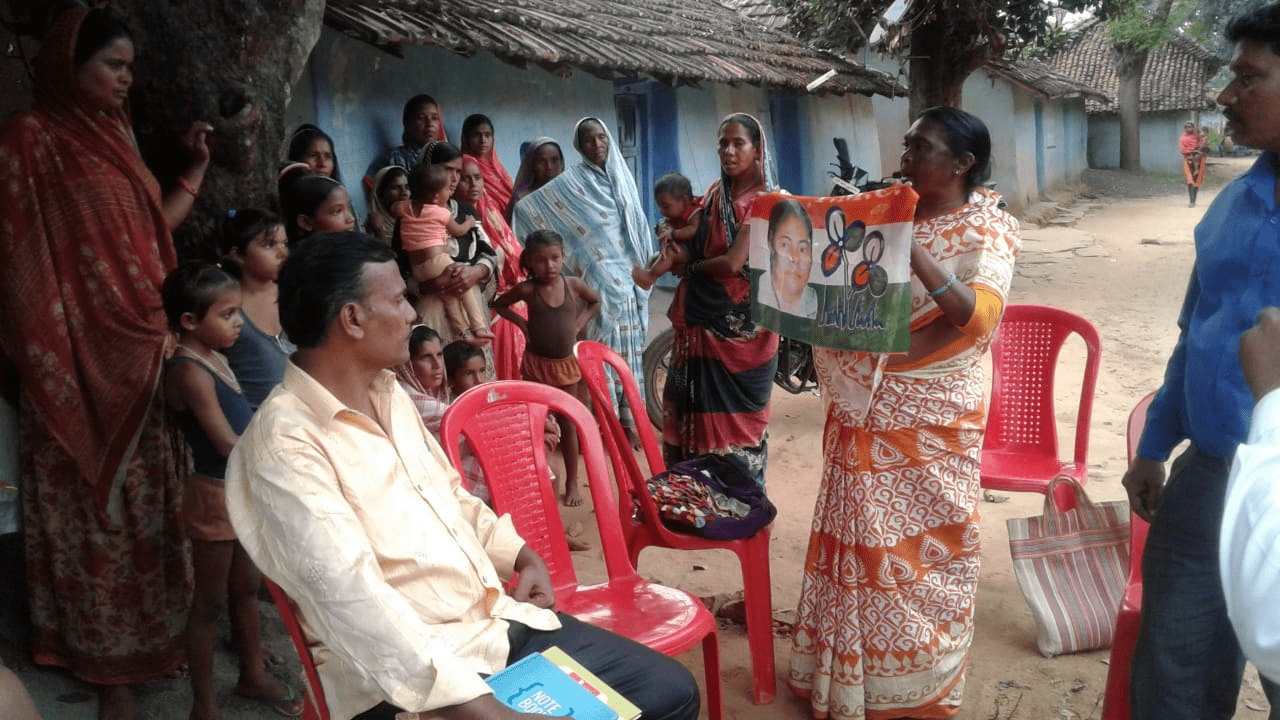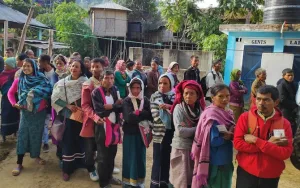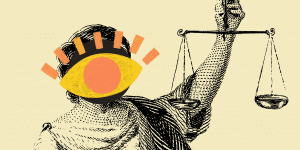Women’s Political Participation Sees A Steady Increase In Jharkhand

Women’s political representation in Jharkhand has seen a constant upward surge since the state came into existence in 2000. The proportion of women Members of Legislative Assembly (MLAs) in the state’s Vidhan Sabha ( State Legislature) doubled from 5% in 2000 to 10% in 2014. The number of women contesting in the state’s Vidhan Sabha seen a 50% rise since the state’s formation. More Adivasi women are getting elected to the Vidhan Sabha. 75% of women MLAs in Jharkhand are from the Adivasi community- a significant increase from 33% in the early years of the state’s formation.
Jharkhand, the mineral rich and tribal majority state in eastern India, came into existence on 15th November, 2000, after over 50 years of people’s movement by the Adivasis of Chotanagpur and Santhal Parganas. The Adivasis had been demanding a separate state after centuries of exploitation and resource grab by Dikus (outsiders) on their lands and forests.
The new state was carved out of the 18 districts of southern Bihar.
As Jharkhand prepares to elect a new Vidhan Sabha (Legislative Assembly) in a five phase election between 30th November and 20th December 2019, BehanBox analyses data across the years to construct the history of women’s political participation in the state.
Jharkhand– state with the 4th highest proportion of women MLAs
Jharkhand elected 10% women MLAs in its 81 member Vidhan Sabha in 2014. As dismal as it is, Jharkhand ranks in fourth place among Vidhan Sabhas with the highest proportion of women MLAs. It is only one of the 8 states in the country with 10% or more women MLAs.
[Image description: Horizontal bar chart ranking states based on the percentage of women MLAs in Vidhan Sabhas. Chattisgarh, West Bengal-14%, Puducherry-13%, Rajasthan, Bihar-12%,UP-11%, Jharkhand, Haryana-10%, Sikkim, Tamil Nadu, Madhya Pradesh, Odisha, Delhi-9%, Andhra Pradesh,Maharashtra-8%, Gujarat, Uttarakhand, -7%, Assam, Arunachal Pradesh, Himachal Pradesh-6%]
Jharkhand has also seen a steady rise in the number of women elected to the Vidhan Sabha. In 2000, when the new Jharkhand assembly was formed out of the 81 constituencies in 18 districts in Southern Bihar, there were 4 women MLAs. In 2005, when the first elections were held for the new state, only 3 women were elected. However, in the next elections in 2009, the number of women MLAs increased to 8, a feat carried forward in the 2104 elections.
[Image description: Horizontal bar chart depicting the proportion of women MLAs in Jharkhand Vidhan Sabha. 2000-5%, 2005-4%, 2009-10%, 2014-10%]
Menaka Sardar of the BJP is the only woman MLA to be elected for three terms from the Potka (ST) constituency. Kunti Devi (BJP) Annapurna Devi (RJD), Vimla Pradhan (BJP), Geeta Kora ( Jai Bharat Samanta Party) and Joba Manjhi ( United Goans democratic Party) have been elected for two terms each to the Vidhan Sabha.
Women Candidates On The Rise In Jharkhand As Parties Give More Tickets
More women are contesting in subsequent elections in Jharkhand. Between the first elections in 2005 and the last elections in 2014, the number of women contestants increased by 50%. Women contestants as a proportion of the total contestants also increased from 5% in 2005 to 10% in 2014. This is significant because the number of male contestants in Jharkhand have decreased by 20% in the same period.
[Image Description: A line chart showing the number of women contestants over the years in Jharkhand Vidhan Sabha
2005- 74, 2009-107, 2014-111]
One positive trend until now has been a progressive increase in the number of tickets given to women by the major parties in Jharkhand. While the Bharatiya Janata Party (BJP) increased the share of women contestants from 3% in 2005 to 10% in 2009 and 2014, the Indian National Congress (INC) increased it from 5% to 19% in the same period. The Jharkhand Mukti Morcha (JMM), a major state party, did not give any tickets to women in 2005 but in 2014, 14% of their contestants were women. All these parties,however, are woefully short of at least 33% ticket share for women.
[ Image Description: A line chart showing the number of women contestants from different parties over the years in Jharkhand Vidhan Sabha.]
Women contesting as Independent has marginally decreased from 31 in 2005 to 24 in 2014.
[ Image Description: A line chart showing the number of women contestants over the years in Jharkhand Vidhan Sabha.
More Adivasi women are getting elected to the Jharkhand Vidhan Sabha
Women candidates from the Scheduled Tribes has seen a 45% rise between the first elections in 2005 to the last elections in 2014. However, there has been a marginal decrease of ST women contestants between 2009 and 2014. 28 of the 81 constituencies in Jharkhand are reserved for the Scheduled Tribes.
Women candidates from the Scheduled Castes, however, have decreased by 26% over the same period. 46% of the total women contestants were from the ST communities, while only 10% were from the Scheduled castes in the last elections in 2014.
[Image Description: A line chart showing the number of Scheduled castes and Scheduled Tribes women candidates in Jharkhand Vidhan Sabha]
The number of ST women getting elected to the Jharkhand Vidhan Sabha has increased progressively. Between 2005 and 2014, the percentage of ST women MLAs has increased from 33% to 75%.
[Image Description: A line chart showing the number of Scheduled castes and Scheduled Tribes women MLAs in Jharkhand Vidhan Sabha]
We believe everyone deserves equal access to accurate news. Support from our readers enables us to keep our journalism open and free for everyone, all over the world.




